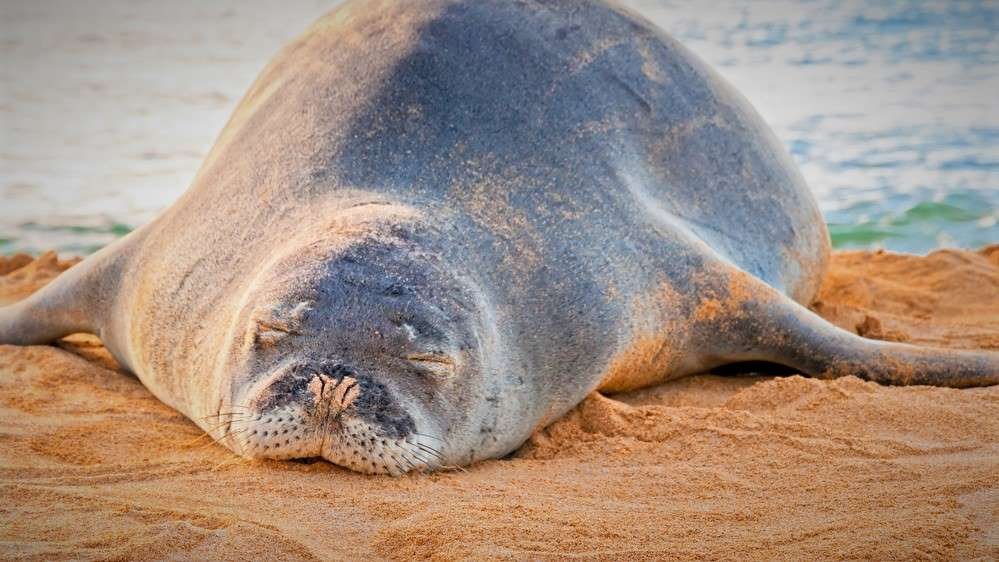Hawaii State Land Mammal: Monk Seal (Neomonachus Schauinslandi)
The monk seal is the official state land mammal of Hawaii and symbolizes freedom and is an essential part of the Hawaiian ecosystem. Their populations have decreased, and few remain in the wild, so we must learn about them and do all preservation actions we can.
Let’s take a quick look at the monk seals’ physical characteristics, evolution, and behavior.
Monk Seals: Quick Overview
Monk seals are earless marine mammals that come in two varieties – Monachus and Neomonachus, each of which consists of three species. The Mediterranean monk seal, Hawaiian monk seal, and Caribbean monk seal (now extinct) are all part of the monk seal family. These creatures have polygynous mating habits and enjoy a diet of bony fish and cephalopods.
Unfortunately, all three species of monk seals have experienced overhunting and are now on the brink of extinction. The Hawaiian monk seal is exclusive to the Hawaiian archipelago, while its Mediterranean counterpart seeks refuge and birthing areas in sea caves. Hawaiian monk seals often sunbathe on sandy beaches and volcanic rocks. In contrast, Caribbean monk seals live in warm temperate, subtropical, and tropical waters of the Caribbean Sea, Gulf of Mexico, and the western Atlantic Ocean.
On average, adult monk seals measure 8 feet (2.4 m) and weigh 500 pounds (230 kg). It is important to note that, in 2014, the Caribbean and Hawaiian species were placed into a new genus, Neomonachus, having previously been classified in the Monachus genus.
Description Of The Monk Seal
It evolves slowly over generations, adapting to survive in the harsh ocean environment – though it can spend time on land too. It migrates around islands in Hawaii, usually alone or with just one companion. Its behavior is primarily solitary by preference, as they tend to rest during the day and hunt at night when they’re not breeding or molting its fur. They are highly endangered due to human activity such as fishing nets, pollution, beach developments, and more – so efforts must be taken for conservation so that this fragile species may thrive again.
Evolution Of The Monk Seal
These mammals evolved from land-dwelling ancestors that moved into the ocean millions of years ago. They’ve adapted to become expert swimmers who can dive deep and stay underwater much longer than other marine animals. Their bodies are rounder in shape which helps them move through the water quickly, while their hind flippers make them agile as they maneuver around coral reefs or nearshore sandbars.
Habitat Of The Monk Seal
Monk seals prefer shallow lagoons, coral reefs, offshore banks, seagrass beds, and sheltered shorelines with sandy beaches for their habitats. Their habitat consists of coastal areas or sandbars near shorelines. During the breeding season, they migrate northward from Hawaii towards more temperate climates – but they always return home by October each year!
Migration And Behavior Of The Monk Seal
Monk seals migrate between different Hawaiian Islands throughout their lifetime. They typically spend months on one island before moving on to another in search of food or mating opportunities. During feeding periods, they dive deep into the sea, looking for prey such as eels, octopuses, squid, crabs, and fish. When it comes to socializing with other members of their kind, monk seals tend to keep their distance from each other even when sleeping – usually lying close enough together so that physical contact won’t occur.
In terms of conservation efforts, unfortunately, the population of monk seals is critically endangered due to human activities such as fishing nets entanglement, pollution, and habitat destruction. Despite this fact, though, there is still hope: The Marine Mammal Protection Act has been enforced since 1972, which prevents hunting and harassment of them by humans; also, various organizations like ‘Hawaiian Monk Seal Research Program’ have been striving tirelessly to protect these creatures.
Conservation Of The Monk Seal
We’re lucky that Hawaii has monk seals, but if the trend in seal population decline continues, it won’t stay that way. Understanding the causes of their decline is essential, including human-caused threats like pollution and habitat destruction.
Fortunately, some organizations work tirelessly to save this majestic creature from extinction. They advocate for stricter regulations on fishing gear and boat traffic in areas where seals live and educate the public about ways to minimize impacts. With luck and hard work, maybe one day these efforts will pay off, and the Hawaiian monk seal population will be back to healthy levels again – but it’ll take all of us doing our part first!

